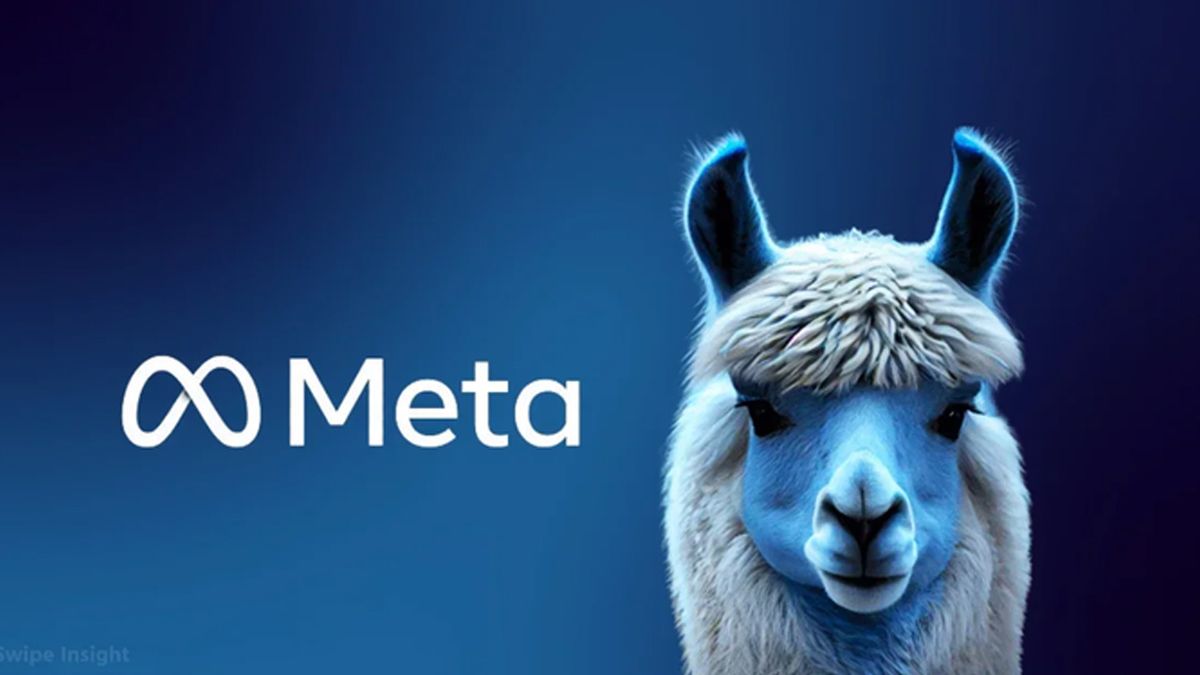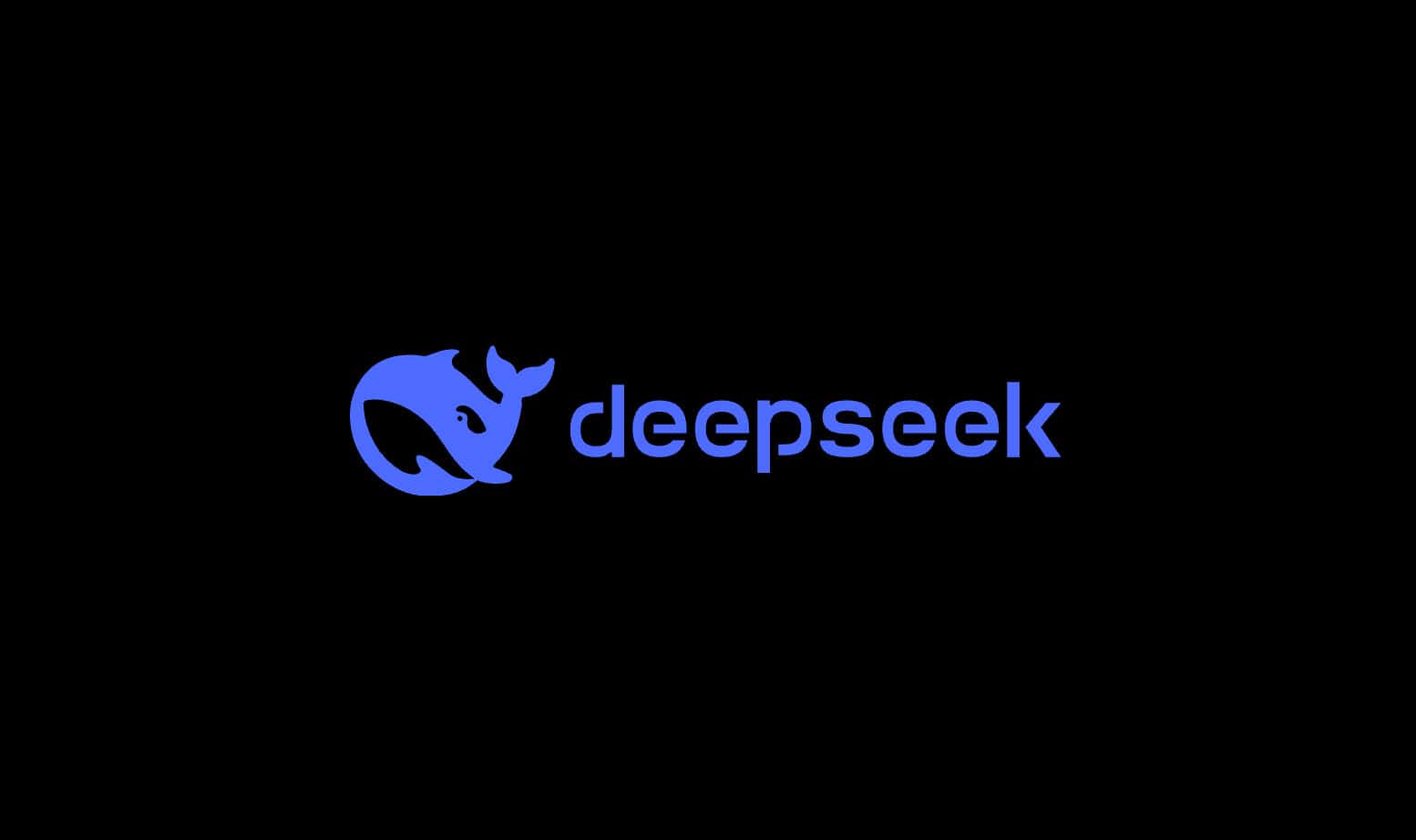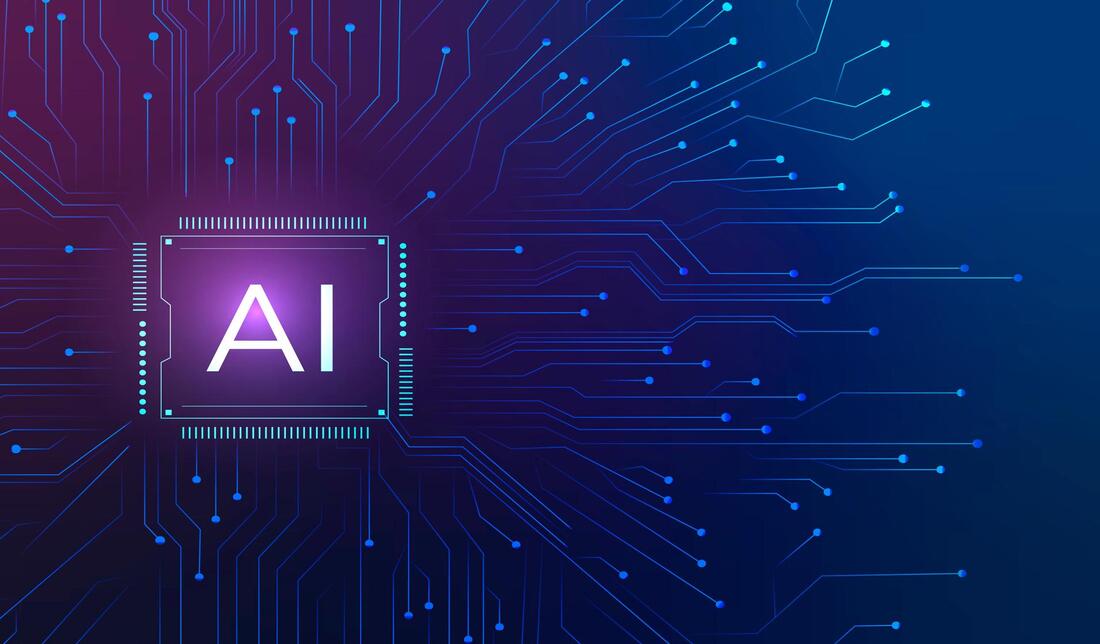The Evolution Of Large Language Models - From ChatGPT To Llama And Beyond
Over the past five years, the AI landscape has undergone a transformative revolution, driven by breakthroughs in large language models like ChatGPT, Llama 3.3, and DeepSeek R1. Innovations in Transformer architecture, attention mechanisms, and efficiency optimizations have redefined scalability and performance, enabling machines to generate human-like text with unprecedented precision.
Author:Suleman ShahReviewer:Han JuMar 05, 2025494 Shares49.3K Views

The past five years have witnessed an unprecedented revolution in artificial intelligence, particularly in the domain of large language models (LLMs). This rapid evolution has transformed our interaction with technology, enabling machines to understand and generate human-like text with remarkable proficiency.
This comprehensive examination traces the technological journey from ChatGPT's emergence to today's cutting-edge models like Llama 3.3 and DeepSeek R1, explaining key architectural innovations, efficiency improvements, and paradigm shifts that have shaped the current AI landscape.
The Foundation: Transformer Architecture And Its Evolution
The foundation of modern LLMs lies in the Transformer architecture, introduced in the groundbreaking 2017 paper "Attention is All You Need." This architecture represented a significant departure from previous recurrent neural network approaches, introducing the self-attention mechanism that revolutionized natural language processing. The Transformer architecture allowed models to process all words in a sequence simultaneously rather than sequentially, capturing long-range dependencies and contextual relationships more effectively.
At the core of the Transformer architecture is the self-attention mechanism, which enables the model to weigh the importance of different words in relation to each other. In self-attention computation, the model identifies the most related tokens to a query using a dot product between the query (Q) and key (K) vectors, scaled by the square root of the dimension to help large networks converge faster. This attention mechanism is applied across multiple "heads," allowing the model to focus on different aspects of the input simultaneously.
The original Transformer architecture utilized what we now refer to as Multi-Head Attention (MHA), where each attention head has its own set of query, key, and value projections. While this approach provides excellent modeling capacity, it becomes increasingly memory-intensive as models scale up, particularly during the autoregressive decoding phase when generating text. This limitation would later drive the development of more efficient attention mechanisms, which we'll explore in detail.
From GPT-1 To The ChatGPT Revolution
The journey toward today's advanced LLMs began with OpenAI's Generative Pre-trained Transformer (GPT) models. GPT-1, released in 2018, represented the first implementation of the pre-training and fine-tuning paradigm that would become standard in LLM development. Despite having only 117 million parameters, GPT-1 demonstrated impressive capabilities in contextual understanding and text generation.
GPT-2, introduced in 2019, substantially increased the model size to 1.5 billion parameters, enabling more coherent and contextually relevant text generation. This scaling approach would become a defining characteristic of LLM development, with each successive iteration growing in parameter count to achieve enhanced capabilities.
The true watershed moment came with the release of ChatGPT in late 2022, which made advanced AI capabilities accessible to the general public through a conversational interface. Built on GPT-3.5, ChatGPT demonstrated remarkable abilities in tasks ranging from answering questions and drafting emails to writing code and creating creative content. Its release sparked widespread interest and accelerated investment in AI research and development across both industry and academia.
Meta's Llama: The Open-Source Alternative
Llama's Genesis And Evolution
In response to the success of proprietary models like GPT, Meta AI introduced Llama in February 2023, positioning it as an open-source alternative to closed systems. Llama represented Meta's approach to creating powerful language models while fostering broader access and innovation in the AI community.
The initial release of Llama included several model sizes (7B, 13B, 32.5B, and 65.2B parameters), allowing developers to choose appropriate models based on their computational resources and use cases1. Initially available only to researchers under a non-commercial license, subsequent versions of Llama adopted more permissive licensing, enabling wider commercial applications and contributing to the democratization of advanced AI technology.
Llama 2, released in 2023, introduced significant improvements over its predecessor, including better performance across various benchmarks. Notably, Llama 2 was the first in the series to include instruction-tuned variants specifically optimized for conversational use cases, reflecting the growing demand for interactive AI assistants.
The Llama family has continued to evolve rapidly, with Llama 3 and most recently Llama 3.3 bringing substantial enhancements in reasoning, multilingual capabilities, and instruction following. The latest Llama 3.3 70B model, released in December 2024, reportedly achieves performance comparable to much larger models while requiring significantly fewer computational resources, representing an important advancement in model efficiency.
Technical Architecture Of Llama
Like GPT models, Llama employs a decoder-only Transformer architecture but introduces several architectural modifications that enhance performance. These include:
- SwiGLU activation function instead of GeLU for improved modeling capacity
- Rotary positional embeddings (RoPE) instead of absolute positional embedding, providing better handling of relative positions
- RMSNorm instead of traditional layer normalization for more stable training
The dimensionality of token representation varies by model size. In the Llama 1 series, the 6.7B parameter model represents each token with a 4096-dimensional vector, while the largest 65.2B model uses 8192-dimensional vectors. This increased representational capacity allows larger models to capture more nuanced semantic information.
A particularly notable feature of the Llama architecture is its implementation of Grouped Query Attention (GQA), an optimization of the attention mechanism that significantly improves memory efficiency while preserving model quality. This innovation addresses one of the key bottlenecks in scaling language models: the memory bandwidth requirements during inference.
Attention Mechanism Optimizations: MQA And GQA
The evolution of attention mechanisms represents one of the most important developments in improving LLM efficiency. As models grew larger, the standard Multi-Head Attention (MHA) mechanism became a significant bottleneck due to its memory bandwidth requirements, particularly during text generation where keys and values from previous tokens must be repeatedly accessed.
Multi-Query Attention (MQA)
Multi-Query Attention emerged as an early optimization approach, utilizing multiple query heads but only a single key/value head. In MQA, all query heads share the same key and value projections, substantially reducing the memory footprint during inference. While this approach successfully accelerates decoder inference, it comes with drawbacks including potential quality degradation and training instability.
Grouped-Query Attention (GQA)
Llama models implement Grouped-Query Attention (GQA), which represents a middle ground between MHA and MQA. In GQA, the number of key-value heads is greater than one but less than the number of query heads, with multiple query heads sharing the same key-value heads.
Specifically, GQA organizes query heads into groups, with each group sharing a common key-value head. For example, in a model with 32 query heads and 8 key-value heads, each key-value head would be shared by 4 query heads. This approach reduces memory bandwidth requirements during inference while preserving much of the modeling capacity of full MHA.
GQA has proven particularly effective for autoregressive decoding tasks common in text generation applications. By reducing the size of the KV cache that must be stored and accessed during generation, GQA enables faster inference and lower memory usage without significant degradation in output quality.
Memory Efficiency Techniques In LLMs
As LLMs have grown in size and complexity, optimizing memory usage has become increasingly critical for both training and inference. Several innovative approaches have emerged to address these challenges, enabling more efficient operation of these massive models.
KV Caching Mechanism
One significant memory optimization is Key-Value (KV) caching, which addresses the redundant computation issue during autoregressive text generation. When generating text one token at a time, a naive implementation would recompute attention for all previous tokens at each step. KV caching stores the key and value projections for previously processed tokens, allowing the model to only compute them for the new token at each step.
While KV caching reduces computation, it creates its own memory challenges as the cached keys and values consume significant memory for long sequences. This challenge is particularly acute for applications requiring long context windows, such as document summarization or conversational AI with extensive dialogue history.
Resource-Efficient Transformer Architectures
Researchers have developed specialized architectures that explicitly target memory efficiency. One example is the Memory Efficient Transformer Adapter (META), designed for dense prediction tasks. META implements a memory-efficient adapter block that enables the sharing of layer normalization between self-attention and feed-forward network layers, reducing reliance on normalization operations.
META also employs cross-shaped self-attention to minimize reshaping operations, which can be memory-intensive. This approach enhances local inductive biases, which is particularly beneficial for dense prediction tasks like object detection and segmentation.
Quantization And Parameter Efficiency
Parameter quantization represents another approach to memory efficiency, reducing the precision with which model weights are stored. By moving from 32-bit or 16-bit floating-point representations to 8-bit or even 4-bit integers, models can achieve substantial memory savings with minimal impact on performance.
Additionally, researchers have developed parameter-efficient fine-tuning methods that allow adaptation of large pre-trained models for specific tasks without modifying all parameters. Techniques like adapter modules, prompt tuning, and low-rank adaptation (LoRA) enable customization of models for specific applications while minimizing memory requirements.
Mixture Of Experts: A Revolutionary Architecture
Perhaps the most significant architectural innovation in recent years is the Mixture of Experts (MoE) approach, which has enabled unprecedented scaling of model capabilities while maintaining reasonable computational requirements.
Conceptual Foundation Of MoE
The Mixture of Experts architecture divides a neural network into multiple specialized sub-networks (experts), each focused on handling specific aspects of the input data. A gating network determines which experts should process each input, activating only a subset of the model's parameters for any given task.
This approach can be conceptualized as having a team of specialists rather than a single generalist. Just as you might consult a doctor for medical issues, a mechanic for car problems, and a chef for cooking advice, an MoE model routes different aspects of a problem to the most appropriate experts.
MoE Implementation And Benefits
In practice, MoE models maintain a large number of parameters while only activating a small fraction for any given input. The gating network essentially acts as a manager, deciding which experts should handle each aspect of the input. This selective activation results in models that can scale to trillions of parameters while keeping computational requirements manageable.
The key components of an MoE system include:
- Input:The data to be processed by the model
- Experts:Specialized neural networks trained for specific aspects of the task
- Gating network:The mechanism that determines which experts should process each input
- Output:The final result after expert processing and combination
The primary benefits of MoE include:
- Efficiency:By activating only relevant experts for each input, MoE models use computational resources more effectively
- Scalability:This architecture allows models to grow to enormous parameter counts without proportional increases in computation
- Specialization:Experts can develop deep specialization in particular domains or subtasks
DeepSeek R1: Revolutionizing AI Efficiency
One of the most recent and significant developments in AI is the introduction of DeepSeek R1 by Chinese startup DeepSeek in January 2025. This model has generated substantial buzz in the AI community due to its exceptional performance and remarkable efficiency.
DeepSeek R1's Innovative Approach
DeepSeek R1 is an advanced AI reasoning model that takes a fundamentally different approach to training and operation compared to many existing models. Rather than relying on traditional pre-labeled datasets, DeepSeek R1 leverages reinforcement learning to activate only the necessary neural networks in real-time based on the specific task at hand.
The model's core innovation lies in its dynamic activation process, employing a Mixture of Experts (MoE) architecture that selectively activates only portions of its neural network relevant to the current task. This targeted approach drastically reduces computational load, resulting in faster processing speeds and improved efficiency.
Performance And Efficiency Benchmarks
DeepSeek R1 has demonstrated exceptional performance across various benchmarks. It achieved a 79.8% Pass@1 score on the AIME 2024 benchmark and a remarkable 97.3% score on the MATH-500 test, outperforming many human participants in problem-solving and coding tasks.
What's particularly impressive about DeepSeek R1 is its cost-effectiveness. The model was trained using approximately 2,000 Nvidia GPUs with a total expenditure of around $5.6 million - a fraction of the costs incurred by major U.S.-based tech companies for similar projects. This efficiency stems from its innovative MoE architecture, which selectively activates only a small portion of its 671 billion parameters during operation.
Industry Impact
DeepSeek R1's launch has sent shockwaves through the AI industry and financial markets. Some analysts have likened its release to a "Sputnik Moment," referring to the historical launch that triggered widespread reactions during the early Cold War. Following DeepSeek's news, AI chipmakers including NVIDIA and Broadcom experienced significant stock price drops, with both falling approximately 17%.
The model's combination of high performance, low cost, and open accessibility (released under an MIT license) has raised profound questions about the future of AI innovation, scalability, and competitive advantage. It suggests that high-performance AI can be built at a fraction of the cost previously assumed necessary, potentially disrupting current business models and development strategies in the AI industry.
The Current State Of AI: Where We Stand Today
As of March 2025, the AI landscape continues to evolve at a breathtaking pace, with several key trends and developments shaping the field.
Model Capabilities And Multimodality
Today's LLMs exhibit capabilities that would have seemed like science fiction just a few years ago. Models can now perform complex reasoning tasks, generate creative content across various domains, write functional code, and engage in nuanced conversations that demonstrate understanding of context, tone, and implicit information.
One of the most significant recent developments is the rise of multimodal capabilities. Modern AI systems can now process and generate content across multiple modalities, including text, images, audio, and video. This enables more natural human-computer interaction and opens up new application domains.
AI Accessibility And Democratization
The landscape has shifted dramatically from exclusively proprietary models toward a mix of commercial and open-source offerings. While companies like OpenAI, Anthropic, and Google maintain cutting-edge proprietary models, the open-source community has made remarkable progress with models like Llama and its derivatives.
The growing availability of powerful open-source models has democratized access to advanced AI capabilities, enabling researchers, developers, and organizations of all sizes to build upon these technologies. This democratization has accelerated innovation and expanded the application of AI across diverse domains.
Efficiency Innovations
A key trend in recent AI development has been the focus on efficiency rather than just raw capability. Researchers and companies are increasingly prioritizing models that deliver optimal performance with minimal computational resources, as exemplified by DeepSeek R1 and Llama 3.3.
These efficiency innovations are critical for several reasons:
- Environmental sustainability:Reducing the energy consumption of AI systems
- Accessibility:Enabling deployment on devices with limited computational resources
- Cost-effectiveness:Making advanced AI capabilities economically viable for a broader range of applications and organizations
Future Directions And Emerging Challenges
Looking ahead, several key directions and challenges are likely to shape the evolution of AI in the coming years.
Architectural Innovations
While the Transformer architecture has dominated the field for several years, researchers continue to explore architectural innovations that could overcome current limitations. These include more efficient attention mechanisms, novel approaches to long-context handling, and architectures specifically designed for multimodal integration.
The success of the Mixture of Experts approach suggests that more granular, conditional computation models may represent a promising direction for future development. By activating only the parts of a model needed for specific tasks, these approaches could enable even greater scaling without proportional increases in computational requirements.
Efficiency And Sustainability
As AI systems continue to grow in size and deployment, efficiency and sustainability concerns will become increasingly central. Future research will likely focus on reducing the environmental impact of AI through more efficient architectures, training methods, and inference optimizations.
The development of specialized hardware accelerators beyond current GPUs may also play a crucial role in improving efficiency. Custom chips designed specifically for the computational patterns of modern AI models could deliver substantial improvements in both performance and energy efficiency.
Ethical Considerations And Governance
As AI capabilities advance, ethical considerations and governance frameworks become increasingly important. Issues of bias, privacy, security, and alignment with human values will require ongoing attention from researchers, developers, and policymakers.
The tension between open and closed development approaches will likely continue, with important implications for transparency, accountability, and the distribution of benefits from AI advances. Finding the right balance between innovation, accessibility, and responsible development remains a critical challenge for the field.
Conclusion
The past five years have witnessed a remarkable transformation in artificial intelligence, particularly in the domain of large language models. From the introduction of ChatGPT to the latest innovations in models like Llama 3.3 and DeepSeek R1, we have seen exponential improvements in capabilities alongside significant advances in efficiency and accessibility.
Key architectural innovations like Grouped Query Attention, KV caching, and Mixture of Experts have enabled models to scale to unprecedented sizes while maintaining reasonable computational requirements. Meanwhile, the growing ecosystem of open-source models has democratized access to advanced AI capabilities, accelerating innovation across numerous domains.
As we look toward the future, the focus increasingly turns to efficiency, sustainability, and responsible development. The remarkable progress we've witnessed suggests that AI will continue to evolve in ways that enhance human capabilities, transform industries, and potentially address some of our most pressing challenges. Understanding these technological foundations and trajectories is essential for anyone seeking to navigate and contribute to this rapidly evolving landscape.
Jump to
The Foundation: Transformer Architecture And Its Evolution
From GPT-1 To The ChatGPT Revolution
Meta's Llama: The Open-Source Alternative
Attention Mechanism Optimizations: MQA And GQA
Memory Efficiency Techniques In LLMs
Mixture Of Experts: A Revolutionary Architecture
DeepSeek R1: Revolutionizing AI Efficiency
The Current State Of AI: Where We Stand Today
Future Directions And Emerging Challenges
Conclusion

Suleman Shah
Author
Suleman Shah is a researcher and freelance writer. As a researcher, he has worked with MNS University of Agriculture, Multan (Pakistan) and Texas A & M University (USA). He regularly writes science articles and blogs for science news website immersse.com and open access publishers OA Publishing London and Scientific Times. He loves to keep himself updated on scientific developments and convert these developments into everyday language to update the readers about the developments in the scientific era. His primary research focus is Plant sciences, and he contributed to this field by publishing his research in scientific journals and presenting his work at many Conferences.
Shah graduated from the University of Agriculture Faisalabad (Pakistan) and started his professional carrier with Jaffer Agro Services and later with the Agriculture Department of the Government of Pakistan. His research interest compelled and attracted him to proceed with his carrier in Plant sciences research. So, he started his Ph.D. in Soil Science at MNS University of Agriculture Multan (Pakistan). Later, he started working as a visiting scholar with Texas A&M University (USA).
Shah’s experience with big Open Excess publishers like Springers, Frontiers, MDPI, etc., testified to his belief in Open Access as a barrier-removing mechanism between researchers and the readers of their research. Shah believes that Open Access is revolutionizing the publication process and benefitting research in all fields.

Han Ju
Reviewer
Hello! I'm Han Ju, the heart behind World Wide Journals. My life is a unique tapestry woven from the threads of news, spirituality, and science, enriched by melodies from my guitar. Raised amidst tales of the ancient and the arcane, I developed a keen eye for the stories that truly matter. Through my work, I seek to bridge the seen with the unseen, marrying the rigor of science with the depth of spirituality.
Each article at World Wide Journals is a piece of this ongoing quest, blending analysis with personal reflection. Whether exploring quantum frontiers or strumming chords under the stars, my aim is to inspire and provoke thought, inviting you into a world where every discovery is a note in the grand symphony of existence.
Welcome aboard this journey of insight and exploration, where curiosity leads and music guides.
Latest Articles
Popular Articles



